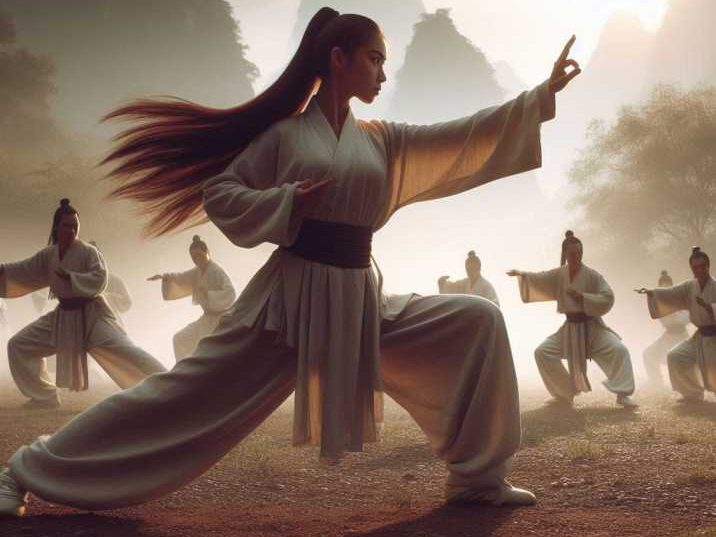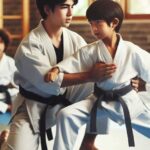Martial arts have a deep, rich history spanning thousands of years. But exactly how old are martial arts? This question often sparks curiosity in enthusiasts and historians alike. The term “martial arts” refers to a broad spectrum of combat practices, many of which date back to ancient civilizations. In this blog post, we will take you on a journey through the origins and evolution of martial arts, exploring its historical significance, development, and key milestones over the centuries.
By the end of this post, you’ll gain a clearer understanding of how old martial arts really are and how they’ve influenced cultures worldwide. We’ll also answer common questions such as how martial arts have changed over time and their importance in modern society.

Table of Contents
Table of Contents
- Introduction to Martial Arts
- The Origins of Martial Arts: Prehistoric Combat Practices
- Martial Arts in Ancient Civilizations
- China
- India
- Japan
- Medieval and Renaissance Martial Arts
- The Development of Modern Martial Arts
- Martial Arts in Contemporary Society
- FAQs About Martial Arts
- Conclusion
Introduction to Martial Arts
Martial arts are codified systems of combat that have been practiced for self-defense, military training, physical fitness, and mental discipline throughout human history. These practices encompass a wide variety of styles and techniques, from grappling and striking to the use of weapons.
The term “martial” itself is derived from the Latin word “Martialis,” which relates to Mars, the Roman god of war. This already gives us a clue as to how old martial arts might be. Martial arts have likely existed in some form for as long as humans have had to defend themselves or engage in combat. But when did they evolve into the structured forms we recognize today?
The Origins of Martial Arts: Prehistoric Combat Practices
The roots of martial arts are believed to extend back to prehistoric times when early humans first developed techniques for hunting and defending themselves against threats. Some of the earliest forms of combat may have involved wrestling or the use of rudimentary weapons such as sticks and stones. Evidence of hand-to-hand combat in prehistoric cave paintings suggests that organized combat practices were in place as early as 10,000 years ago.
These primal forms of combat were not “martial arts” in the modern sense, but they laid the groundwork for what would eventually become the sophisticated martial systems we see today. As human societies began to evolve, so too did the need for more advanced combat techniques, particularly for warfare and self-defense.
Notable Points:
- Prehistoric Origins: Evidence of early combat systems dating back to 10,000 years ago.
- Purpose: Primarily for survival, hunting, and protection.
- Rudimentary Weapons: Use of sticks, stones, and natural materials.
Martial Arts in Ancient Civilizations
As civilization developed, so did the art of combat. Various cultures across the globe began formalizing combat practices, creating martial arts systems that would influence the entire world for millennia to come.
China: The Birthplace of Many Martial Arts Styles
China is often considered the birthplace of many traditional martial arts. One of the oldest recorded systems is Shuai Jiao, an ancient form of Chinese wrestling dating back more than 4,000 years. However, the most well-known martial arts from China, such as Kung Fu, originated during the Xia Dynasty (around 4,000 years ago) and were later formalized during the reign of the Han Dynasty (206 BCE – 220 CE).
Chinese martial arts were influenced by both military and spiritual practices. The integration of Confucianism, Daoism, and Buddhism into combat techniques gave rise to a philosophy that emphasized harmony, balance, and inner strength.
India: The Birth of Kalaripayattu
India is home to Kalaripayattu, one of the oldest martial arts in existence, believed to be over 3,000 years old. This ancient art form, still practiced today, is known for its graceful movements and the use of weapons like swords and shields. It is believed that Indian martial arts traveled to China with Buddhist monks and contributed to the development of Chinese martial arts.
Japan: Samurai and the Rise of Martial Arts Schools
In Japan, the development of martial arts is closely tied to the Samurai, the warrior class that emerged during the 10th century. Japanese martial arts, such as Jujutsu, Kenjutsu, and later Karate, were developed as part of the Samurai code of honor and military tactics. These arts focused on discipline, respect, and mastery of weapons like the katana (Japanese sword).
Notable Points:
- China: 4,000-year-old Shuai Jiao and Kung Fu.
- India: 3,000-year-old Kalaripayattu.
- Japan: Samurai warrior training, including Jujutsu and Kenjutsu.
Medieval and Renaissance Martial Arts
During the medieval and Renaissance periods, martial arts in Europe began to flourish. Fencing, for example, became highly developed in the 14th and 15th centuries as a formal system of swordsmanship. Knights and soldiers trained in combat techniques that would help them in battle, giving rise to schools of martial training that spread across Europe.
In Asia, martial arts continued to develop with the refinement of techniques and the founding of schools that emphasized both physical and spiritual training. In Japan, this period saw the formalization of Bushido, the Samurai code of conduct, which combined martial prowess with ethical standards.
The Development of Modern Martial Arts
The late 19th and early 20th centuries saw the modernization of martial arts worldwide. This period was marked by the global exchange of ideas and the formalization of martial arts practices.
- Judo was developed by Jigoro Kano in Japan in the late 1800s as a modernized, sport-oriented form of Jujutsu.
- Brazilian Jiu-Jitsu emerged in the early 20th century after the Gracie family adapted Japanese Jujutsu techniques to create a new, highly effective grappling system.
- Karate spread from Okinawa to mainland Japan and later to the rest of the world, becoming one of the most popular martial arts globally.
- Taekwondo, a Korean martial art, was formalized in the mid-20th century and quickly gained international popularity due to its dynamic kicking techniques.
Notable Points:
- Judo: Developed in Japan in the late 1800s.
- Brazilian Jiu-Jitsu: Emerged in the early 20th century.
- Karate & Taekwondo: Became popular worldwide.
Martial Arts in Contemporary Society
Today, martial arts have become a global phenomenon practiced by millions of people for self-defense, sport, and personal development. From MMA (Mixed Martial Arts) to Taekwondo, martial arts have transcended their traditional roots and evolved into forms of fitness, competition, and entertainment. Additionally, martial arts are now part of military and law enforcement training programs worldwide.
Notable Points:
- MMA: Combines techniques from various martial arts.
- Global Influence: Martial arts are practiced for self-defense, fitness, and competition.
Table of Information about How Old Are Martial Arts:
| Time Period | Region | Martial Arts Development | Notable Styles | Key Influences |
|---|---|---|---|---|
| Prehistoric Era | Global | Early combat for survival and protection | Wrestling, weapon use | Survival instincts |
| Ancient China (4,000 years ago) | China | Early formalized martial arts | Kung Fu, Shuai Jiao | Confucianism, Daoism |
| Ancient India (3,000 years ago) | India | One of the oldest martial arts systems | Kalaripayattu | Hinduism, Buddhism |
| Ancient Japan (10th Century) | Japan | Samurai martial arts traditions | Jujutsu, Kenjutsu | Bushido, Zen Buddhism |
| Medieval Period | Europe | Development of European combat systems | Fencing, knightly combat | Chivalry, military training |
| Late 19th Century | Japan | Modernization of traditional martial arts | Judo | Sport-focused martial arts |
| 20th Century | Global | Global spread and evolution of martial arts styles | Taekwondo, Brazilian Jiu-Jitsu | International cultural exchange |
| Contemporary Era | Global | Mixed Martial Arts (MMA) and sport-focused practices | MMA, Karate | Globalization, fitness, and sport trends |
Conclusion
Martial arts have a history that spans thousands of years and crosses numerous cultures. From ancient China and India to modern-day MMA, the evolution of martial arts tells a story of humanity’s enduring need for self-defense, discipline, and personal growth. The age of martial arts is not only measured in centuries but in the timeless values and lessons that continue to inspire practitioners today.
FAQs About Martial Arts
1. How old are martial arts?
Martial arts date back to prehistoric times, with evidence of organized combat systems existing over 10,000 years ago. Formalized martial arts systems, such as those from China and India, are over 3,000 years old.
2. What is the oldest known martial art?
The oldest known martial art is Kalaripayattu, originating from India more than 3,000 years ago.
3. Are martial arts still practiced today?
Yes, martial arts are widely practiced worldwide for self-defense, fitness, and sport. Modern forms like MMA, Karate, and Judo are extremely popular.
4. How have martial arts evolved?
Martial arts have evolved from ancient combat techniques to include sport-oriented systems like Judo and MMA. They have also integrated mental and spiritual disciplines from philosophies like Confucianism and Buddhism.
5. What are the benefits of practicing martial arts?
Practicing martial arts improves physical fitness, mental discipline, self-confidence, and self-defense skills.


